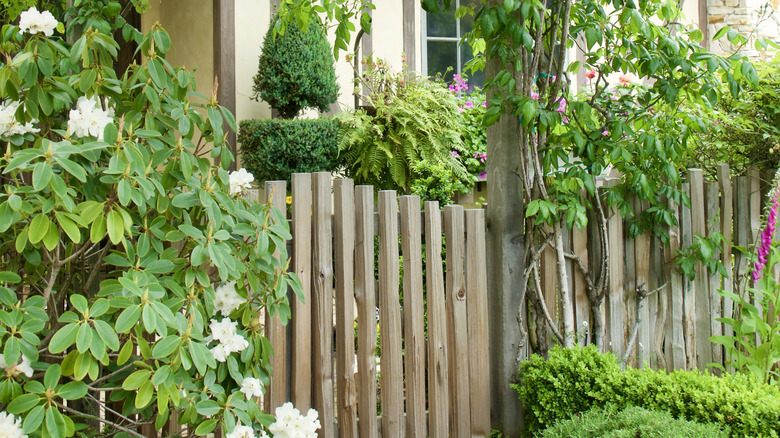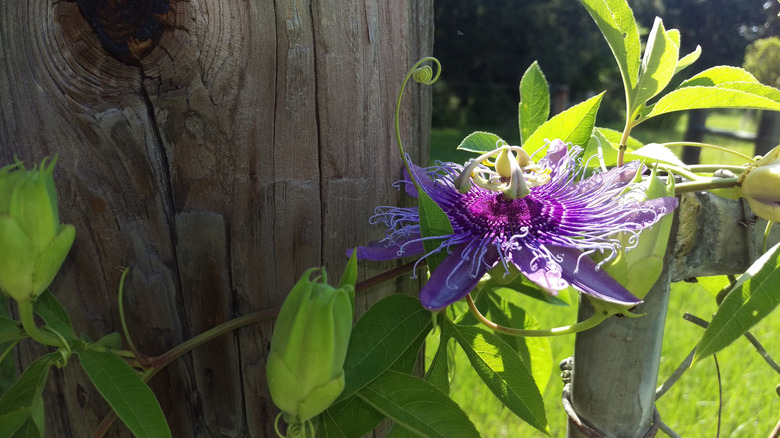The Climbing Plant That Will Cover Your Fence In Stunning Purple Flowers
Climbing plants add so much character and charm to your yard it's no wonder gardeners love them so much. There are some climbing vines that don't belong in your garden landscape, like these climbing plants you should avoid growing in your yard. But there are many that are ideal for adding a living privacy screen to your outdoor areas that can even be useful in attracting beneficial insects, such as these yellow-flowering climbing plants that pollinators love. If you're looking for the perfect climbing plant to cover your fence in style, consider the lovely passionflower (Passiflora incarnata.)
Also known as maypop, this native of the southeastern part of the U.S. is fast-growing and hardy with gorgeous bright purple blooms with white accents that measure about 3 inches across and glossy green leaves. This vine is a perennial with climbing stems that work wonderfully for covering fences, pergolas, trellises, and any other structure where you want to add that vining feature. You will find this Florida native growing wild in open fields, along riverbanks, and forest edges as far west as Texas and as far north as Illinois.
Although there are several species of passionflower that are considered invasive such as Passiflora caerulea, Passiflora edulis, Passiflora foetida, and a few others, Passiflora incarnata is not considered an invasive species. It can be an overzealous grower but if you are up for regular pruning you can handle this plant. Planting your passionflower in containers or training them from the containers to climb your fences and trellises, will also contain their spread while still offering that romantic vining look in your garden like these climbing plants that will make you feel like you're living a fairytale.
The unique needs of passionflower
Passionflowers thrive well in USDA Hardiness zones 7 through 10 but some varieties can handle zones 5 and 6 with proper protection. In the colder zones, it will die back completely during the winter and reemerge in the spring. Passionflowers love sunlight and need at least four to six hours of full sun if you live in the cooler climates. They can handle partial shade so if you live in the warmer regions search for spots that get full morning sun and shade in the afternoons when the sun is hottest. Sheltered places are better such as against a fence, wall, trellis, or pergola so they have protection from the wind. Rich and moist soil that is well-draining is the preference for these lovely plants, and pH levels are best from neutral to the acidic side. Water your passionflowers deeply after you first plant them. After that, once or twice per week with about an inch of water is sufficient.
The stems and leaves of the passionflower is potentially toxic for dogs, cats, horses, and children, but its ripened fruits are both edible and non-toxic for humans. If you want to attract more pollinators and wildlife to your garden space, passionflower is the perfect plant to add to your garden. The leaves are an excellent source of food for the caterpillars various butterflies including Zebra longwing, Gulf fritillary, and Julia butterflies. Hummingbirds and bees love the flowers, and the fruit is a favorite of turkeys, song birds, and other wildlife.

